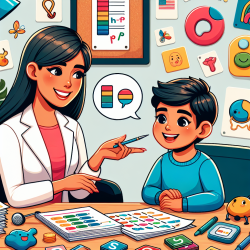Phonological disorders in children not only affect their ability to communicate effectively but also have a profound impact on their academic and social development. As practitioners, our ongoing mission is to seek out innovative and effective methods to address these challenges. The Metaphon Resource Pack (MRP) offers a comprehensive approach, grounded in the latest linguistic and learning theories, to assess and treat children with phonological disorders. This blog explores how practitioners can leverage the insights from the MRP to enhance their therapeutic skills and encourages further exploration of this valuable resource.
Understanding Phonological Disorders
Phonological disorders are linguistic in nature, rather than simply articulatory. This distinction is crucial for effective intervention. Traditional methods often focus on the phonetic or articulatory aspects of speech, which can overlook the linguistic complexity of phonological disorders. The MRP, however, emphasizes the importance of treating these disorders as linguistic issues, focusing on the phonological system as a whole.
The Metaphon Resource Pack: A Brief Overview
The MRP is designed for children up to 7 years of age and aims to develop communication effectiveness through active involvement in therapy. It consists of a manual, record forms, two assessment picture books, and a set of monitoring pictures. The pack outlines a two-phase therapeutic approach: the first phase focuses on raising awareness of speech sounds and their properties, and the second phase aims at applying this awareness to improve communication effectiveness.
Enhancing Assessment Skills
One of the primary benefits of the MRP is its detailed assessment procedures, which enable clinicians to conduct a comprehensive analysis of a child's phonological system. This in-depth assessment goes beyond identifying phonetic errors, allowing therapists to pinpoint specific phonological processes that need to be addressed. By adopting these assessment techniques, practitioners can tailor their therapy more effectively to each child's unique needs.
Improving Therapy Through Active Involvement
The MRP encourages therapists to involve children actively in their therapy. This active involvement fosters a deeper understanding of phonological concepts and their application in communication. For instance, by exploring sound properties and contrasts, children become more aware of how sounds function within their language, leading to more meaningful and lasting improvements in phonological awareness and speech production.
Adapting the MRP to Diverse Needs
Although the MRP is designed for children up to 7 years of age, its principles can be adapted for older children and those with additional needs, such as learning disabilities. The focus on phonological awareness and active engagement in therapy is beneficial across a wide age range and can be particularly helpful for children who struggle with both spoken and written aspects of language.
Integrating the MRP into Practice
Integrating the MRP into clinical practice involves more than simply following a set of procedures. It requires a shift towards viewing phonological disorders through a linguistic lens and engaging children as active participants in their therapy. Practitioners can start by incorporating the MRP's assessment techniques into their evaluations and gradually introduce its therapeutic activities into sessions. Creativity and flexibility in applying the MRP's principles are key to tailoring therapy to each child's needs.
Encouraging Further Research and Exploration
The MRP is a valuable tool for speech-language pathologists, but it is also a starting point for further research and exploration. By delving into the theories and methodologies underpinning the MRP, practitioners can continue to expand their knowledge and refine their approach to treating phonological disorders. Engaging with the broader research community through conferences, publications, and webinars can also provide additional insights and foster collaboration.
In conclusion, the Metaphon Resource Pack offers a comprehensive framework for assessing and treating phonological disorders in children. By understanding and applying the principles of the MRP, practitioners can enhance their therapeutic skills, leading to more effective and meaningful interventions. I encourage my fellow speech-language pathologists to explore the MRP further and consider how its insights can be integrated into their practice. For those interested in diving deeper into the research behind the MRP, please follow this link: Metaphon Resource Pack.










